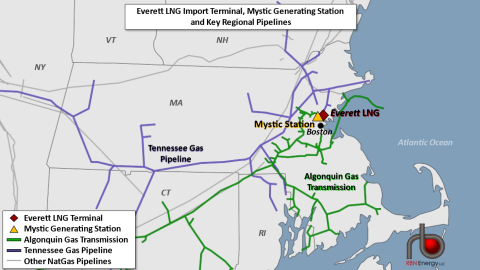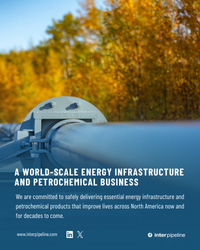The Everett LNG import terminal, a mainstay of Boston’s gas grid, is expected to close by the end of May 2024, raising questions about future gas supply in New England. The terminal’s closure is closely tied to the imminent loss of its biggest customer, the 1,413-MW Mystic generating station — the region’s largest fossil-fuel plant. Constellation Energy, which owns both the Everett terminal and the Mystic power plant, has said it can’t keep Everett open next year when the Mystic plant closes unless another gas purchaser takes its place. In today’s RBN blog, we’ll address the impacts of Everett’s potential demise on New England in the short term and on regional gas supply during future polar vortex events.
The fate of the Everett terminal (red diamond in Figure 1) is complicated because it’s one of the only facilities on the East Coast that can accept LNG from giant tankers and regasify it for local use. In addition to the Mystic generating station (yellow triangle), the terminal is also connected to the Tennessee Gas Pipeline (lavender line) and Algonquin Gas Transmission (green line) systems — the primary conduits for gas piped in from the Marcellus/Utica — which feed about 12,000 MW of gas-fired power and provide gas for heating, cooking and other residential and commercial purposes. Constellation, an Exelon subsidiary, decided to close the Mystic facility shortly after the Federal Energy Regulatory Commission (FERC) denied a complaint challenging ISO-New England’s (ISO-NE) planning process for replacing the Boston-area facility.
Figure 1. Everett LNG Import Terminal, Mystic Generating Station, and Key Regional Pipelines.
Source: RBN
Join Backstage Pass to Read Full Article










